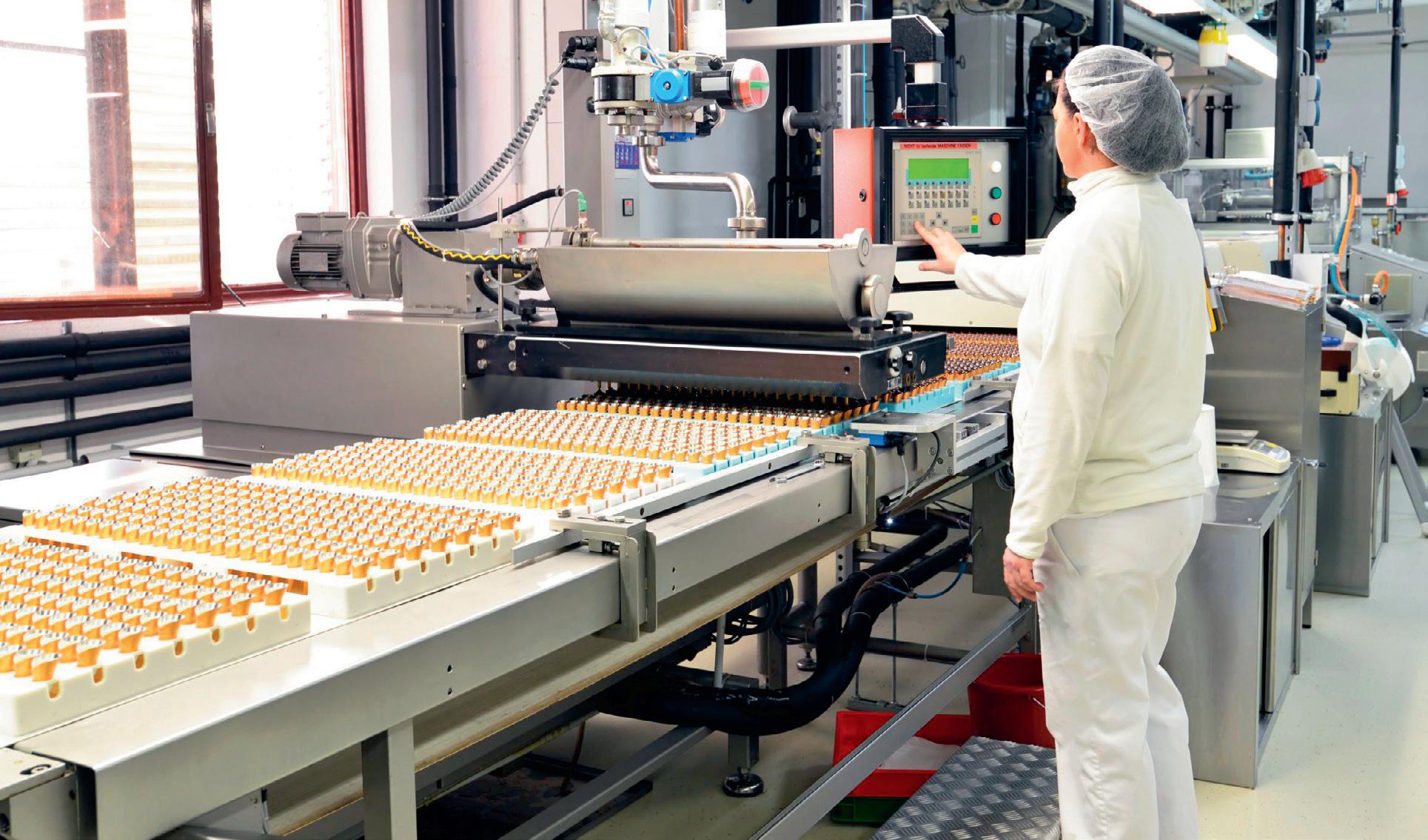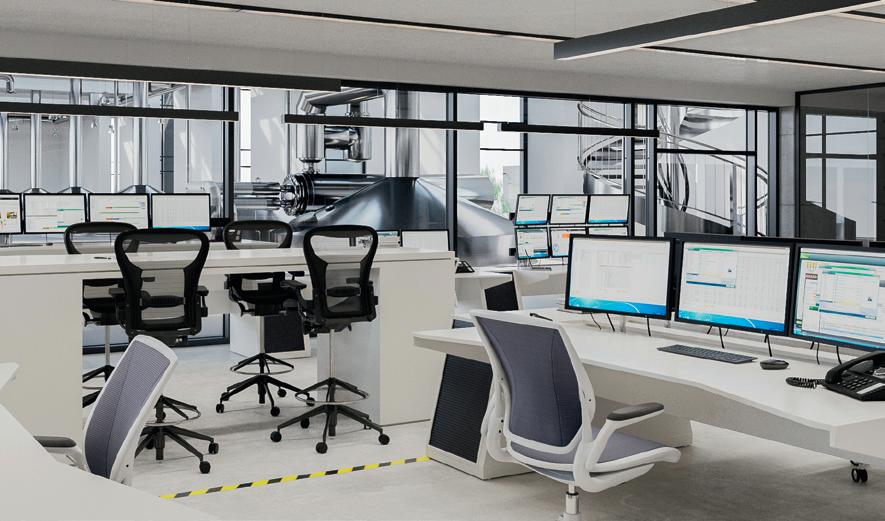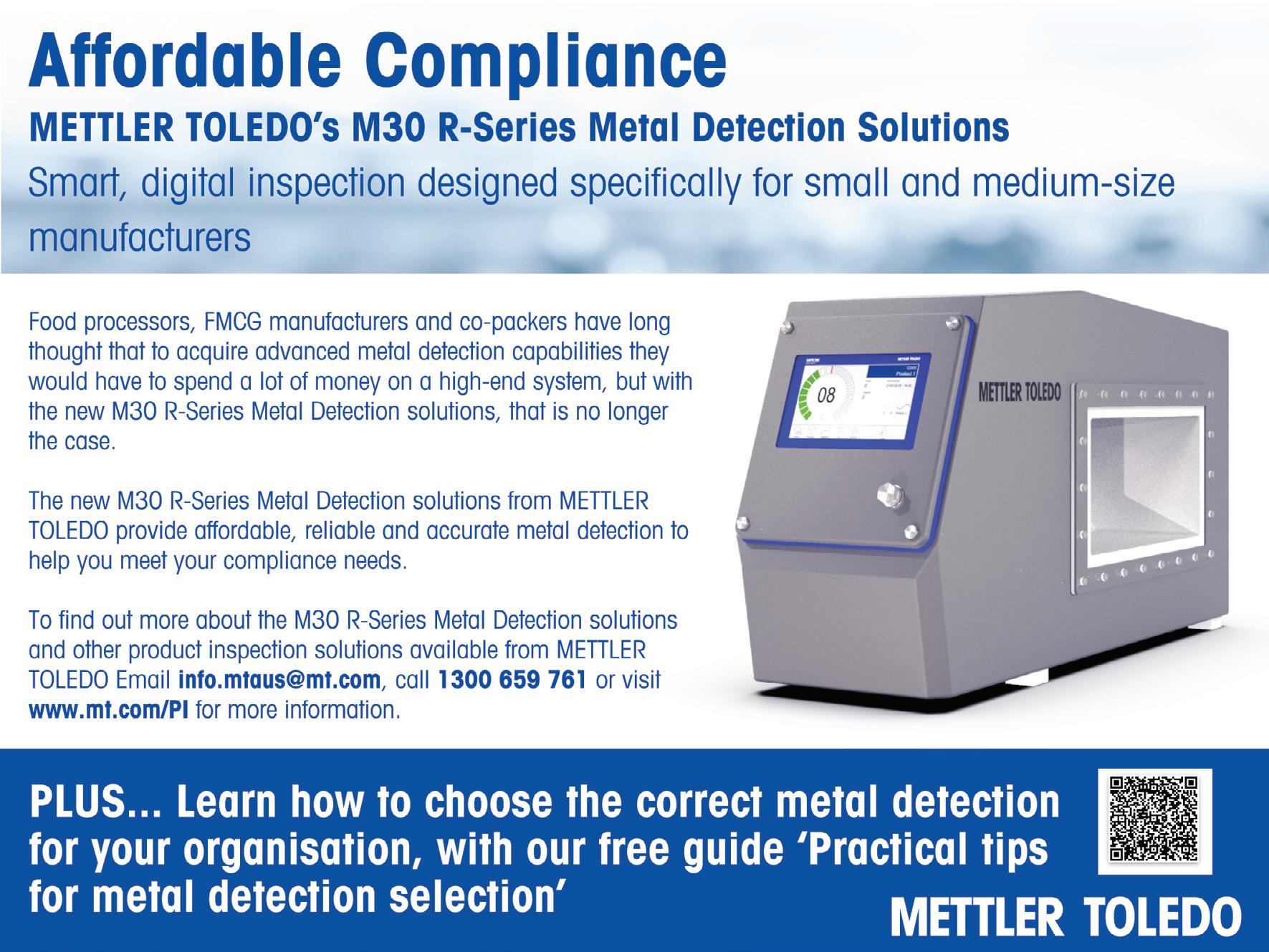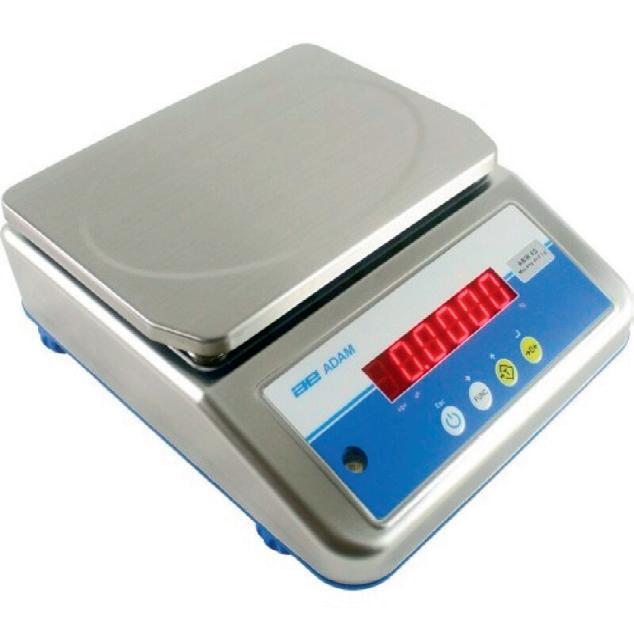
5 minute read
Waste not, want not
istock.com/industryview
PROCESSING
Waste not, want not
How automation can reduce food loss in the food industry Neil Ballinger, head of EMEA, EU Automation
The UN Food and Agriculture Organization (FAO) reported in 2019 roughly 1.3 billion tonnes of edible food per year were lost or wasted globally. While food waste occurs largely in households and retail, food loss also occurs during post-harvest, transport, storage, distribution, processing and packaging. This means food manufacturers have a role to play in reducing the waste.
The FAO reported some of the direct causes of food loss and waste, such as lack of proper process management and prolonged storage. Automation can help address these issues by limiting human error, improving operations and automating product tracking.
Reducing human error
After studying 47 food manufacturers in Belgium, researchers at Brunel University London and Ghent University found that human error accounted for 10.9% of all food waste. Automation can help reduce human error by digitalising manual work that is less engaging and more likely to cause mistakes. This can be achieved by installing plant management software to help streamline processes by collecting data automatically, eliminating the need for whiteboards and clipboards.
“In many instances, there wasn’t proper training or a standardisation of work being applied in their workplace,” said Dr Manoj Dora of Brunel Business School upon the study’s findings. “As a result, there was a greater tendency toward errors, and therefore, more food waste.”
While proper training is always necessary, automation can help with the standardisation of production. Implementing technology such as IoT sensors can help standardise vital processes like quality control and temperature checks, making them run more efficiently and ensuring every product has the same level of inspection.
Traceability
retail. The installation of automated tracking systems can help reduce supply and product loss by automatically tracing and monitoring food from supply to delivery.
Automating the tracking system means there is no need for manual inputs that can be affected by human error, improving supply chain management. Tracking systems also allow supply chain managers to collect data that can help determine inefficiencies and unnecessary expenses in the supply chain.
Estimates by the FAO state that 13.8% of the total food produced globally is lost between the farm and transport to retail.
Maintenance and downtime
Despite the many benefits automation brings to the food industry, manufacturers are still hesitant due to the higher level of maintenance needed and the risk of equipment downtime that could cause more food waste.
According to the U.S. Department of Agriculture (USDA), perishable foods, such as meat and milk, should be discarded if held above 5°C for more than 2 hours. Manufacturers might fear that in case of unplanned downtime caused by equipment failure, the food might be spoiled due to the inability to process and package it in a timely manner. However, predictive maintenance can help avert these issues.
Automation in the food industry can be daunting for many manufacturers, but change is inevitable. Automation technology can progress the industry while reducing food waste. Those in the food industry who have yet to automate their processes should consider starting a trial run to see if digitalisation might help them limit food waste.
Brewing automation solution
Brewery-specific ABB Ability BeerMaker process control solution is designed to improve safety and quality, boost productivity and raise operational efficiency. The solution can also help to reduce impacts on water and energy resources and therefore meet consumer demand for more sustainably crafted drinks.
Based on the ABB Ability System 800xA distributed control system, the process automation solution comprises a control system with batch functionality following the worldwide S88 standard and a digital twin to simulate new recipes. Crafted and tested with brewing knowledge from ABB’s brewmaster, it can be customised using a variety of parameters.
Ready-made and tested templates and objects can bring a high level of automation and intelligence of plant functions into operators’ hands. There is a prepared inventory for queue handling, diagnostics and comprehensive cleaning in place (CIP) support.
Designed to meet the industry’s need for intuitive, visual solutions, the solution can help operators manage their preferred operating procedures and can be used on computers, tablets or mobile devices.
Additional digital solutions based on ABB Ability Manufacturing Operations Management (MOM) have the capabilities to identify energy consumption and beer or extract losses, as well as provide reporting functions and dashboard visualisation. These include the ABB Ability BatchInsight concept, which can use big data analytics to identify process anomalies at the earliest stages.
Other features for breweries include: intuitive controls and high-performance human-machine interfacing, fast detection and resolution of process disturbances, consistent alarm messages, report management and standard operating procedures (SOPs).
ABB Australia Pty Ltd
www.abbaustralia.com.au



Stainless steel washdown scale
Adam Equipment has grown its Aqua family of washdown scales with the addition of the easy-to-clean Aqua Stainless Steel (ABW-S). Washdown scales are particularly useful for applications like food production and foodservice, where scales require frequent, thorough cleaning. Like the original Aqua range, the Aqua ABW-S has been designed for ease of use and efficiency in demanding environments like industrial factories and food processing plants. After a simple washdown, the scale — which is National Sanitation Foundation (NSF)-certified for food safety — is ready to go again. For additional safety, the product includes blue levelling feet which increase visibility while providing support to keep the scale from sliding on a potentially wet countertop.
With a rating of IP68, the scale offers protection from dust and water, allowing it to be fully submerged in water deeper than 1 m without harm to its components. Strategically placed channels in the housing and a sealed internal design help protect components from water penetration.
The product is available in four models that range in capacity from 4 to 32 kg and readabilities from 0.1 to 2 g. Built to last, the scales feature a grade 304 stainless steel housing and platform, along with a sealed keypad. The generously sized pan (245 x 180 mm on most models and 300 x 210 mm for the ABW 32S model) is removable, making the scale easy to clean and maintain.
For productivity and efficiency, bright front- and rear-facing 20 mm LED displays allow two users to share a single scale. The product can be powered by the included AC adapter or a built-in rechargeable battery that offers up to 55 h of on-the-go weighing. Along with its percentage weighing and parts counting functions (including parts counting optimisation that continually refines piece weight as parts are added), the product is designed to simplify checkweighing with hidden-until-needed indicators that alert the user if a sample is lower, higher or within specified limits.
Adam Equipment (SE ASIA) Pty Ltd
www.adamequipment.com.au
Nadratowski
Food Processing Machinery

DOWNLOAD THE CATALOGUE
www.nadratowski.com











